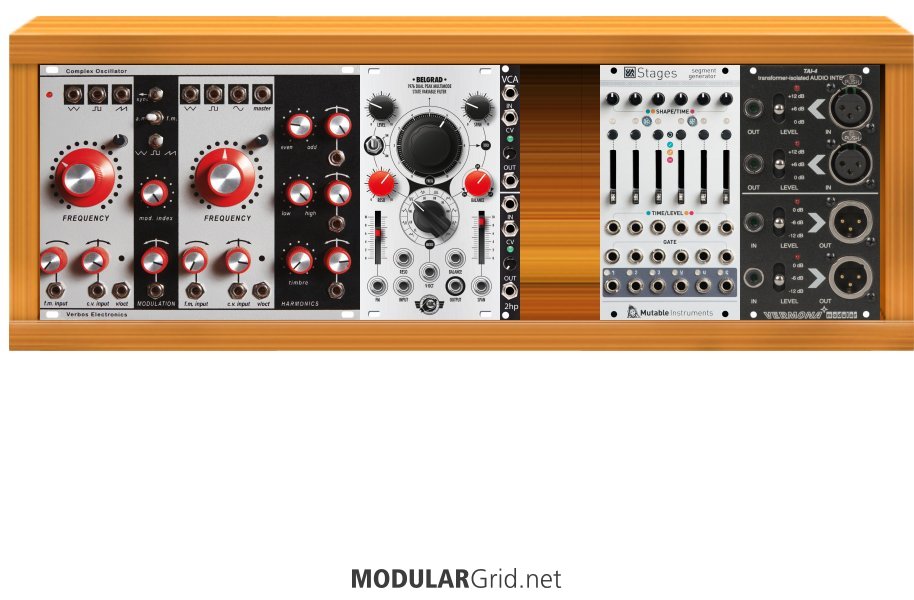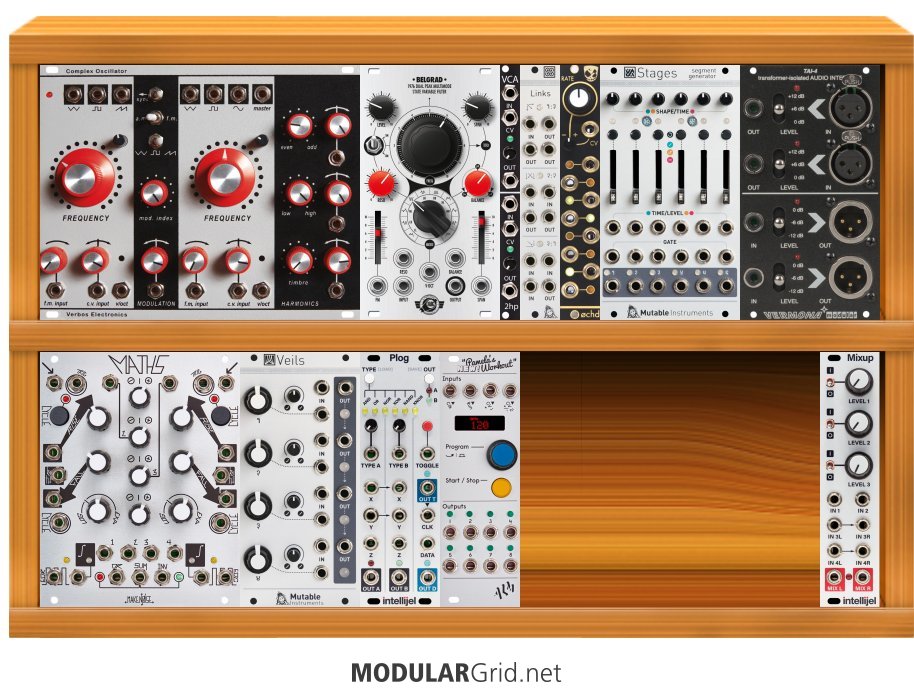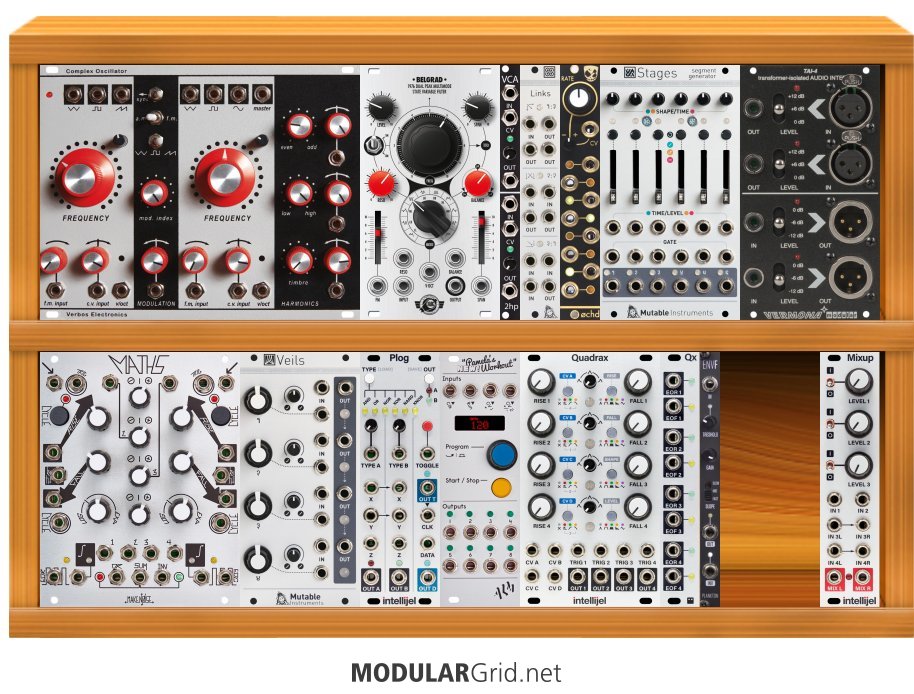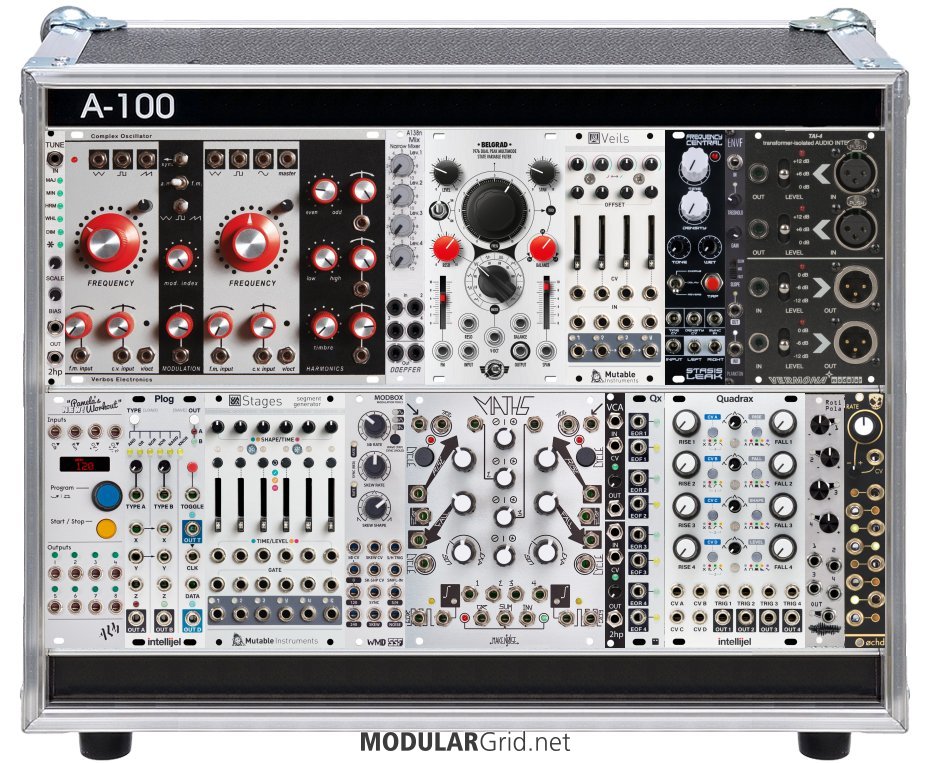Starting over would be a good idea at this point. This isn't even functional as a synthesizer. Just like there's not much point in trying to resuscitate someone who drowned 8 hours previously, this isn't close to being at a "fixable" point. Plus, you've bought this stuff...so you've got your initial modules bought already, and this will force how you can build from this point...and that's always a BAD IDEA.
OK, so this build here is missing...
Attenuators
Mixers
A host of modulation sources
Proper envelope generators
Any effects
Sufficient VCAs
Power (unless you're using a powered cab here...at any rate, you can't jam 3U height modules into a 1U tile case)
Sequencing
Random sources/noise
Sample and Hold
Clock generator and modifiers
Logic
...and the modules you DID get are ones that are generally large, so this will force your hand on a proper build. And most notably, a SMALL build...you're not in the range where large modules sit comfortably throughout the entire build. That happens once you start into the range of cabs beyond 2 rows and beyond 104 hp per row. So if you're keeping those expensive modules, you're going to be pushed into a situation where they dictate the build...and NOT YOU. At least, not in ways you want.
This goes for everyone reading this post...and I do mean EVERYONE:
Just because you see some hotshot on YouTube building a small build DOES NOT MEAN that you can do this, too! Invariably, the synthesists doing this are experienced, and they're putting together mission-specific builds...NOT general-purpose synths that fit into 1 x 84 hp (and even that form factor is a PITA to work with). Unless you're trying to do what they're ACTUALLY doing...DON'T DO IT!!!! If you're starting in modular, build a proper all-purpose system FIRST. Leave the tricky stunt builds for LATER...once you've learned everything the general purpose build does!
Also, there's a lot of YouTube synth channels that I don't recommend...EVER. I've seen equipment being misused, false/inaccurate information being passed on, module demos where you can't see the module being demoed due to the patchcords or, very often, the YouTuber's hands, and sometimes just absolute, outright LIES because the YouTuber's doing their gig for the free swag and gear, and NOT as impartial information. YouTube's accurate info really only seems to come from a small handful of YT users, but moreso from the manufacturers themselves...and you SHOULD be watching THOSE. But that'll wind up excluding maybe...hm...at least 2/3rds of what's on the platform, if not significantly more.
If you want to sort this out before another rather expensive mishap, my suggestions would be as follows:
1) Ignore YouTube's various synth guys, for the most part. I would suggest Loopop as being useful, plus Hainbach, Sam Battle's "Look Mum No Computer" channel, Simon the Magpie (especially for interesting, envelope-pushing ideas), and one or two others...aside of the manufacturer clips, of course.
2) Get your info from users in the trenches. MG is a great resource, as are Muff Wiggler and Gearslutz, although some judicious "noise filtering" is necessary there.
3) Get a copy of THIS: https://vcvrack.com/ Get familiar with it. You'll see why almost immediately.
4) Make a zillion prospective builds on MG. Try doing this for a few MONTHS, carefully fine-tuning and critically ripping into builds on your own and with users of the forum here. Don't even THINK about further purchases until you've come up with something that includes what you already have AND which you can intuitively sense is THE build. Believe me, you'll know when that happens.
One last thing to consider: this isn't a video game. You don't get points for nailing your build on the first shot...because NO ONE can nail a build on the first shot. ModularGrid is here so that you have a resource for doing this over and over and over and over and...well, you get the idea. Get things right here...THEN pull out the Magic Plastic. BUT NOT UNTIL THEN!





